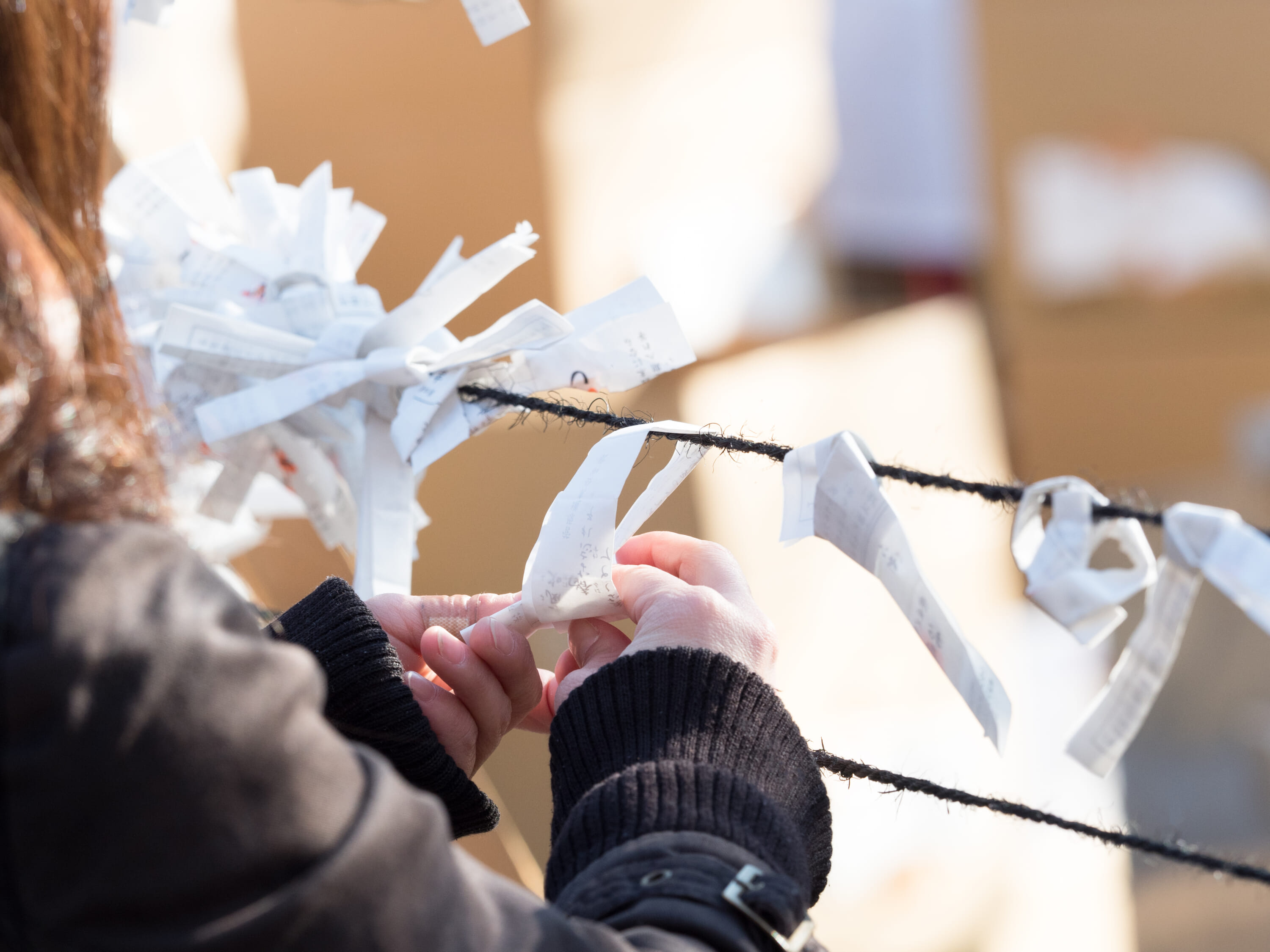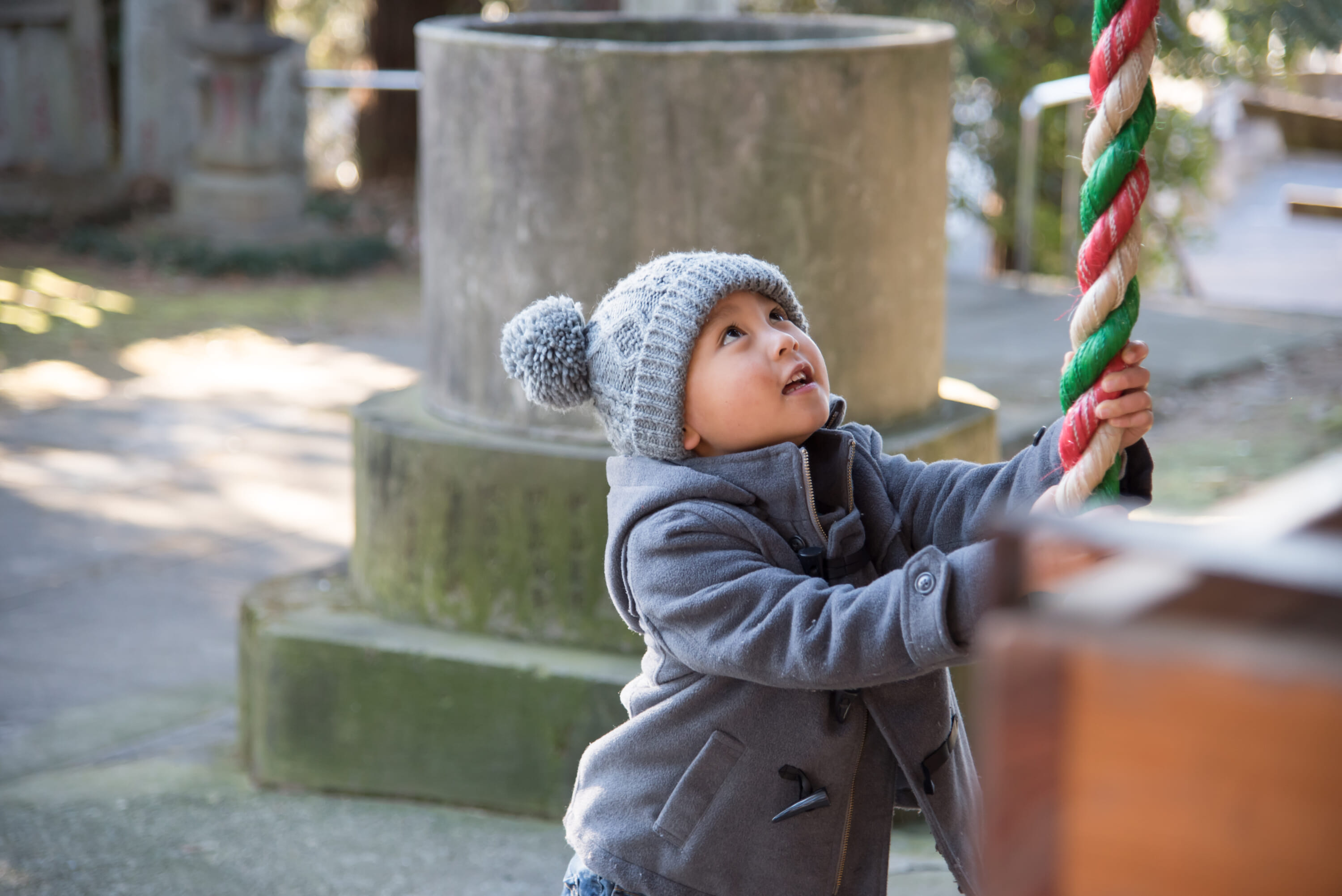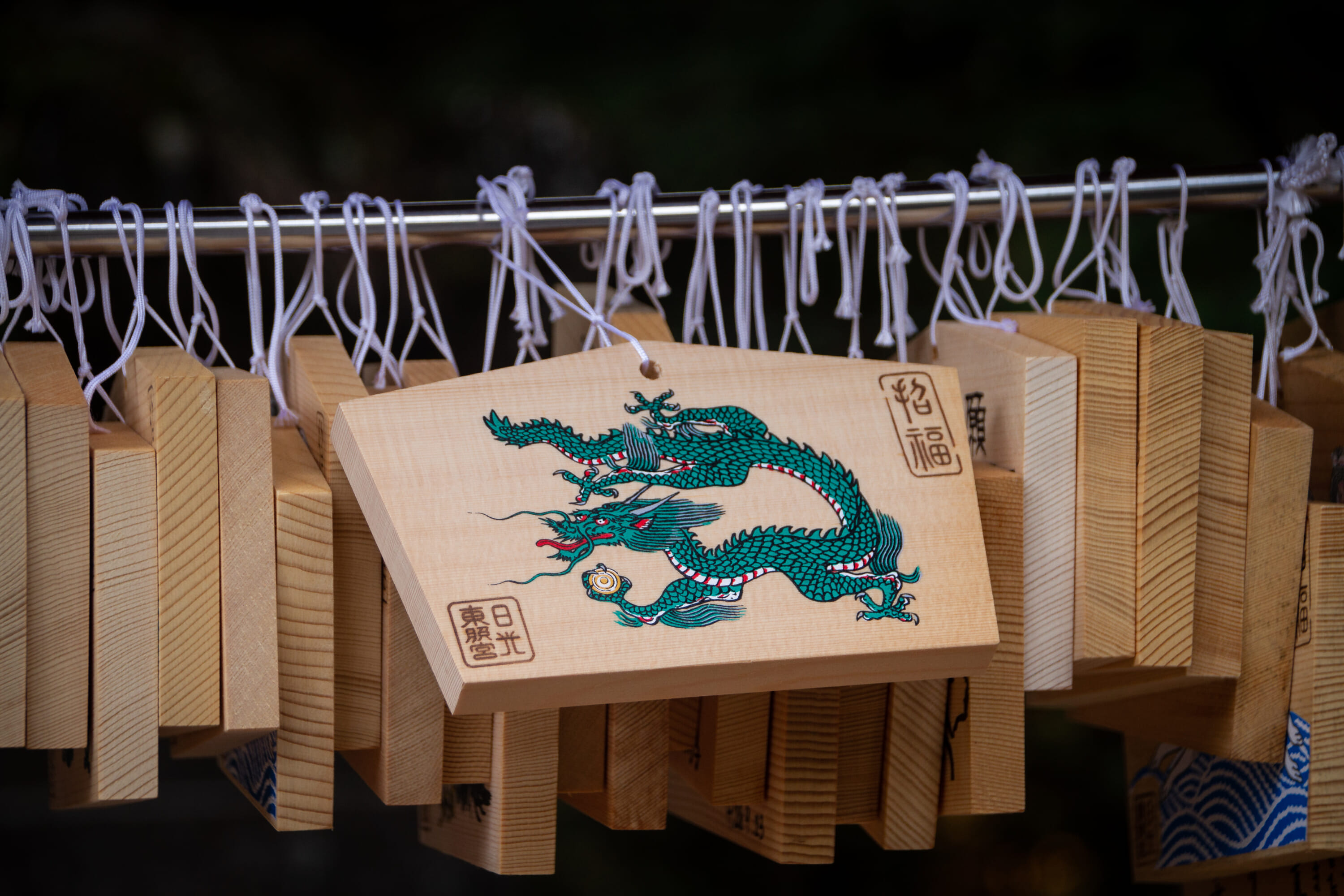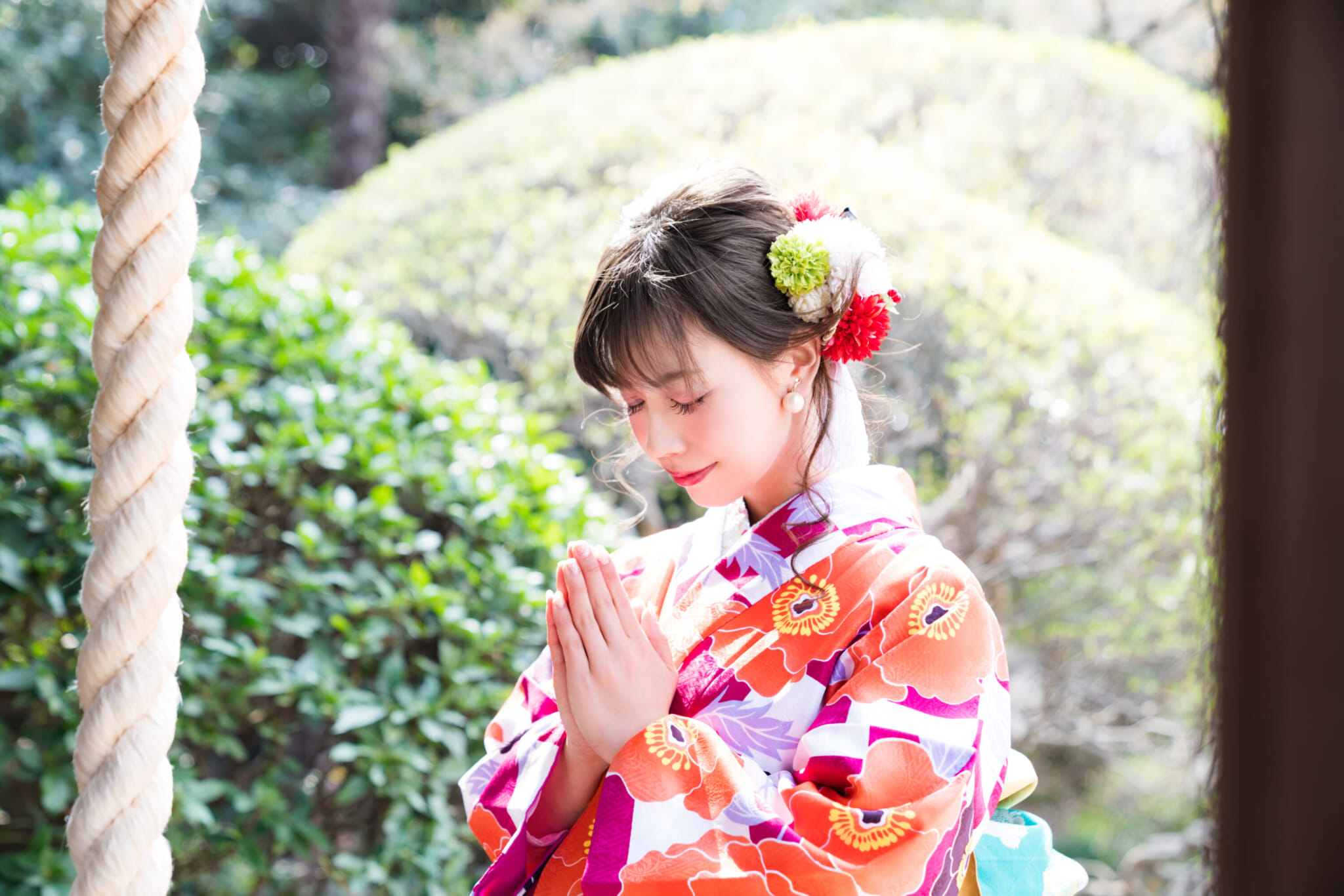In Japan, people celebrate New Year with hatsumode, the first shrine or temple visit of the year. The purpose of hatsumode is to pray for good fortune and ward off bad omens for the year ahead. Wrapping up the year with joya no kane, the New Year’s Eve bell ringing ceremony that happens in temples across the country, people flood shrines and temples to buy amulets as soon as it strikes midnight on New Years.
Keep reading to learn how to partake in your very own hatsumode celebration.

What to Do During Your Hatsumode Visit
For the most part, hatsumode is not any different from your usual visit to the shrine or temple. Usual rules apply, so you’ll want to bow before entering the holy space and cleanse your hands at the water fountain. The money you throw in when you pray is also the same, so you can offer anything from five yen to however generous you’re feeling. At a shrine, the two bows, two claps, one bow rule remains the same, and at temples, you can light an incense stick if they are offered.
For hatsumode, it is customary to partake in shrine and temple activities whole-heartedly. This includes buying omamori amulets and returning old omamori from the year before, writing wishes on ema (wooden plaques) and pulling an omikuji fortune for the year. You can take pictures and compare fortunes with friends, and if you pull a good fortune, like daikichi or kichi, you can keep it for safekeeping for the year. If you happen to pull a bad fortune – daikyo, to be exact – you can always tie it up, symbolic of tying your connection with God to protect you. Shrines will also sell omamori and objects with the zodiac animal of the year, so prepare to see a lot of dragon trinkets, if you haven’t been seeing them already.

Where to (Not) Go for Hatsumode
At this time of year, you can visit any shrine or temple you like. If you live in Japan, you’ll probably want to pay respects to your neighborhood shrine, to express gratitude for protecting you in your day-to-day life. If you want to visit a well-known landmark, like Sensoji Temple, Meiji Jingu Shrine or Yaskuni Shrine, be aware that it will be very busy. Sensoji, for example, will bring about a ridiculously long queue during New Years that stretches through and beyond the Nakamise shopping street. Especially on ganjitsu (New Year’s Day), you might want to stay away from the major shrines and temples if you’re not fond of big crowds. Wherever you decide to go – and you can go to multiple – it’s important to visit a shrine or temple that you feel a personal connection with, since you’re making a decision to start the year with them.

What’s Special About Hatsumode?
The main point that makes hatsumode special is that it happens at the beginning of the year. Any time from midnight on New Year’s Day to January 3 counts (the three-day period is referred to as sanganichi), and it’s hands-down the busiest time of year for shrines. In fact, it’s such a busy time, that during Covid, the government announced that sanganichi was to be held over the course of a week instead of three days to thin the crowds. To celebrate, many shrines and temples will hold special events or sell drinks, like amazake or sake. A lot of guests will also visit in kimono, to dress in their very best in front of the gods at the beginning of the year.
Mostly, hatsumode is a great time to reflect on what you’d like for the year ahead. Oshogatsu (Japanese New Year) is a festive time to celebrate with friends and family, and you will find hatsumode to be an event full of laughter and excitement for the year ahead. This year, bring in all the good fortune and make the most of your holidays with hatsumode.
Akemashite Omedetougozaimasu – Happy New Year!
Related Posts
- 10 Things To Do in Tokyo During the New Year Holidays
- List of 7: Quirky Japanese Festivals and Traditions
- Staying Overnight in a Japanese Temple: A Day at Tokei-in Temple
Updated On December 26, 2023








